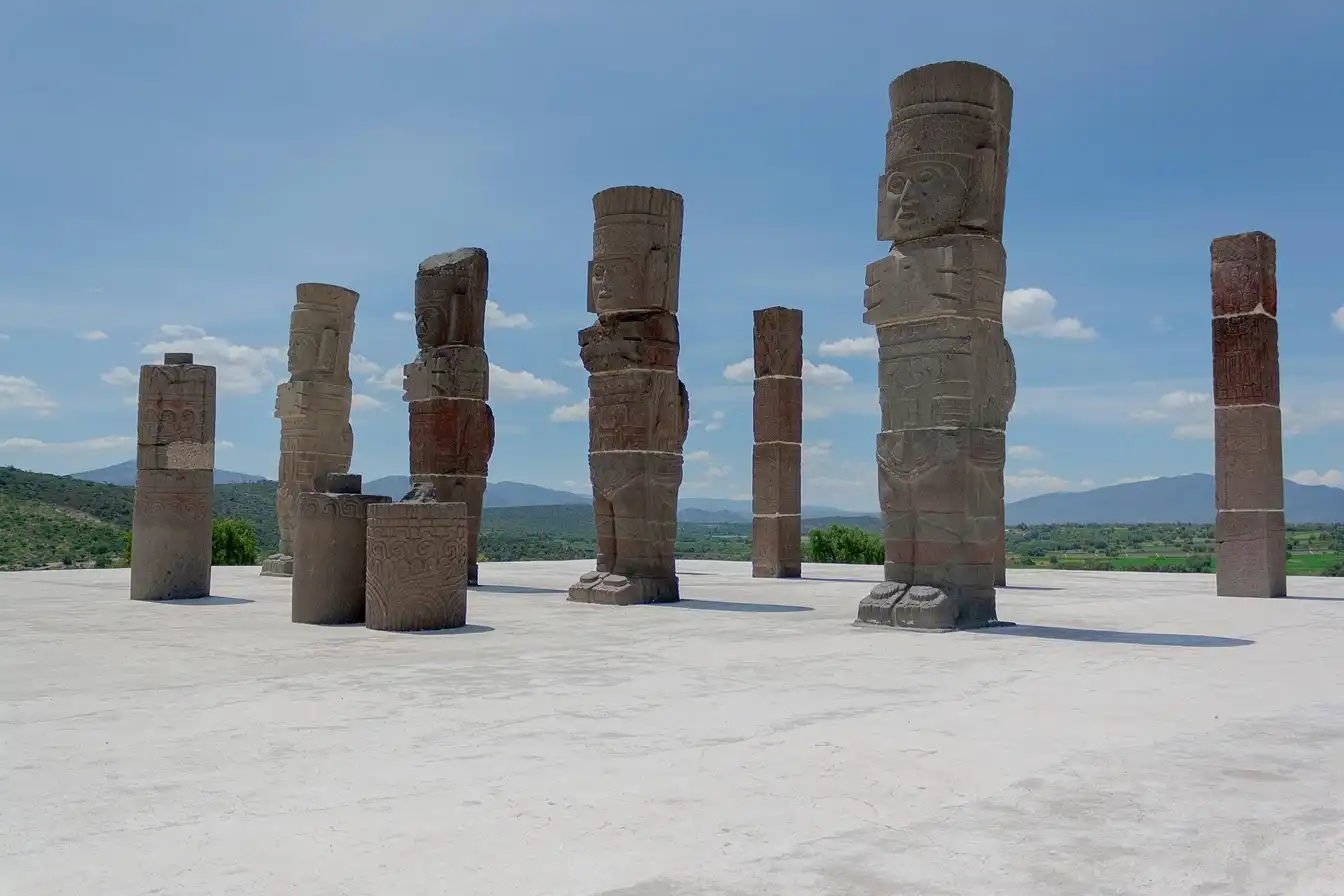Most travelers fly right past Hidalgo on their way to somewhere else. Big mistake.
Just 90 minutes north of Mexico City, this compact state packs more variety than destinations twice its size. Turquoise hot springs cascade down canyon walls. Ancient stone warriors stand frozen in time. Colonial mining towns blend British heritage with Mexican soul.
I stumbled into Hidalgo three years ago during a weekend escape from CDMX. That quick trip turned into four return visits. Each time, I discovered something new.
Here’s what makes Hidalgo state special: everything sits close together. Soak in thermal pools at sunrise, explore 1,000 year old ruins by afternoon, and bite into a Cornish pasty in a mountain town by sunset. All within two hours of each other.
This complete guide covers the best places to visit in Hidalgo, from famous attractions in Hidalgo to hidden spots most tourists never find.
Why Visit Hidalgo Mexico?
Location works in your favor. Most attractions in Hidalgo sit within two hours of Mexico City. No flights needed. Leave after breakfast, arrive before dinner.
Variety keeps things interesting. Mountain forests shift to desert valleys. Archaeological sites neighbor colonial haciendas. Natural attractions range from adventure access hot spring pools to family friendly water parks.
Authenticity still exists. Tourism in Hidalgo remains lower than Oaxaca or San Miguel de Allende. In Huasca de Ocampo, Mexico’s first Pueblo Magico, you’ll walk cobblestone streets with local families, not tour groups.
The mining legacy created villages frozen in time. Volcanic geology blessed the region with some of the best places to visit in Mexico for thermal experiences.
Best Time To Visit Hidalgo & Quick Plan
| Detail | Information |
|---|---|
| Best Time to Visit | November to April (dry season, clear skies) |
| Distance from Mexico City | 90 to 180 km (1.5 to 3 hours) |
| Recommended Duration | 2 to 4 days |
| Getting Around | Car rental or organized tours |
| Budget | $50 to $100 per day |
Top 10 Things to Do in Hidalgo Mexico
1. Grutas de Tolantongo Hot Springs
Las Grutas de Tolantongo (also called the Tolantongo Caves) lives up to the Instagram hype. Then exceeds it.
Mineral rich turquoise water tumbles down a narrow canyon, filling tiered infinity pools carved into cliff faces. Each pool seems to float in midair. Steam rises constantly. The thermal river maintains perfect bathing temperature year round at 35 to 38°C.
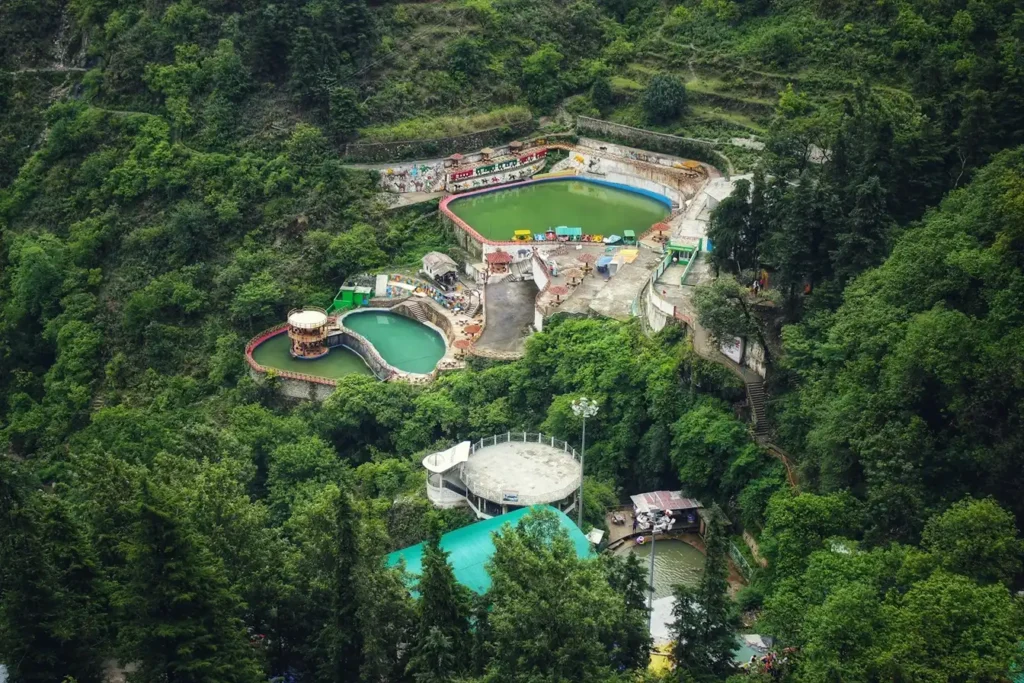
For more information and guide here is the official website.
What to Explore:
The cascading hot spring pools along the canyon wall offer that classic photo op. The water’s color comes from high mineral content.
Wade through the tunnel cave where warm waterfalls pour down in near darkness. It ranges from meditative to mildly claustrophobic.
The thermal river flows along the canyon floor. Way less crowded than the pools, especially on weekdays.
Essential Info:
| Detail | Information |
|---|---|
| Hours | 7:00 AM daily |
| General Entrance | 230 (12.5 USD) pesos per person |
| Best Time | Weekday mornings |
| Drive from CDMX | 2.5 to 3 hours |
| Accommodation | Basic cabins available on site |
Fee Details:
| Detail | Fee | Activities |
| General Entrance | 230 (12.5 USD) pesos per person | Cave, Tunnel, River, Swimming, trekking, Thermal Pools, Suspension Bridge, Waterfalls, etc. |
| Parking | 50 MXN (2.7 USD) | Daily |
| Ticket Bus Ixmiquilpan-Tolantongo | 70 MXN ( 3.8 USD) | Per Trip |
| Ticket bus Molanguito-Tolantongo | 30 MXN (1.7 USD) | Per Trip |
For the latest fee, rent a camp or buy utensils, please head over to the official website.
The final 30 minutes wind down a dramatic mountain road with cliffs and minimal guardrails. Many visitors prefer organized tours.
Pro tip: Stay overnight. You’ll catch sunrise at the pools and enjoy them after day trippers leave at sunset.
2. Prismas Basálticos Waterfalls
Twenty minutes from Huasca, nature created something extraordinary.
The Prismas Basálticos formation (basaltic prism columns) displays perfectly geometric columns of cooled lava. These hexagonal basaltic columns reach 40 meters high. Waterfalls cascade down the grooved surfaces into a green pool below, creating amazing views.
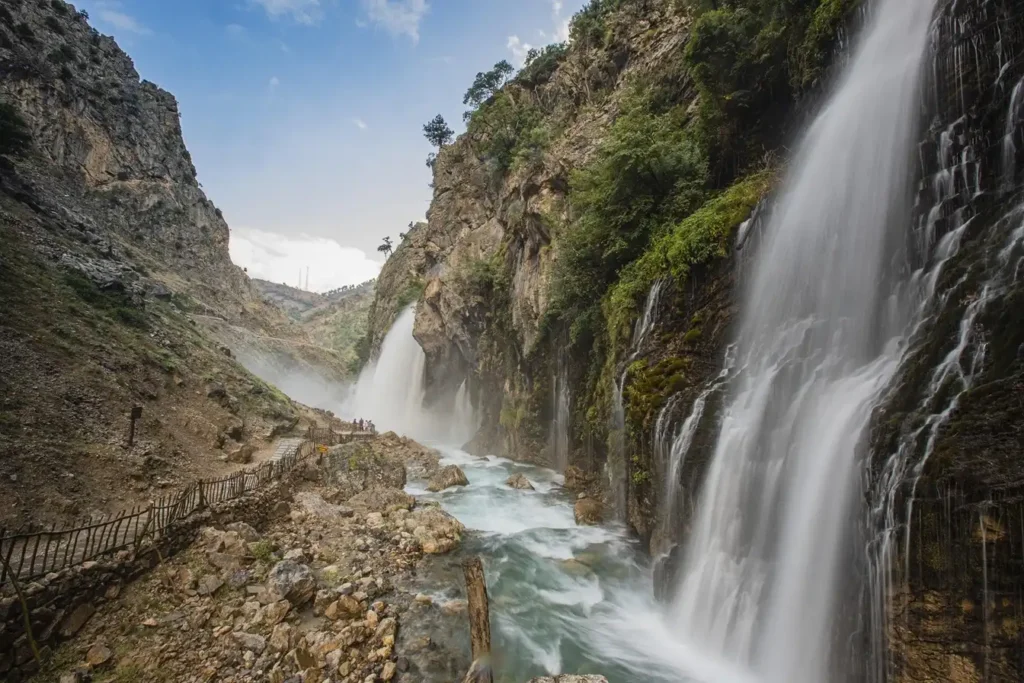
Volcanic activity millions of years ago created this. As lava cooled, it fractured into precise hexagonal columns. Only a handful of similar formations exist worldwide.
Two viewpoints available:
Santa María Regla side offers the classic angle. Most photographers prefer this side. More dramatic views, less infrastructure.
Tourist center side provides easier access with restaurants and bathrooms. Views are less spectacular but more convenient for families.
Activities:
Zip line across the canyon on cables suspended above the formation. Rappel down the cliff face with professional operators. Golden hour produces the best light for photography.
Quick Facts:
Entry costs 50 to 80 pesos. Allow 1 to 2 hours for viewing. Easily pairs with Huasca de Ocampo and Hacienda Santa María Regla in one afternoon.
3. Tula Archaeological Site
Before the Aztecs, the Toltecs built their capital here.
The archaeological site preserves what remains of a civilization that flourished from 900 to 1150 AD. One structure still commands attention.
The Atlantean Figures:
Four massive stone warriors stand guard atop the Pyramid of Tlahuizcalpantecuhtli. Each statue measures 4.6 meters tall and weighs several tons. The warriors carry atlatls and wear distinctive butterfly shaped chest plates.
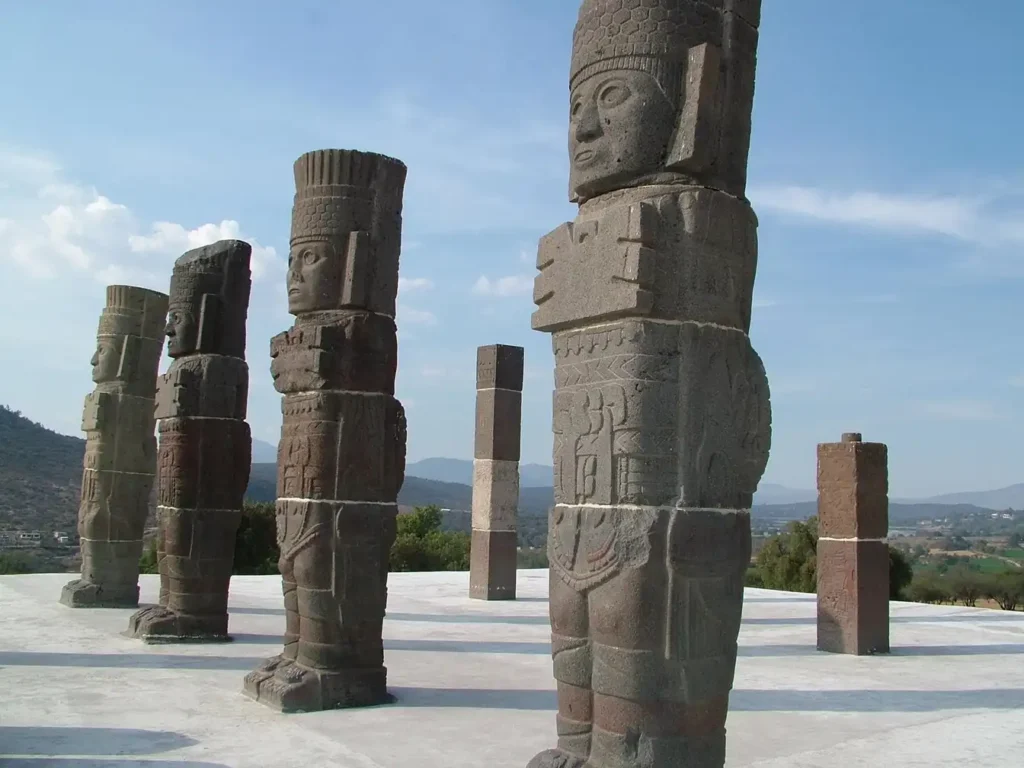
These figures once supported a temple roof. Now they stand exposed, observing centuries of visitors. The Toltec artistry influenced later cultures. Similar warrior statues at Chichén Itzá show clear Toltec design elements.
Also See:
The ball court where ancient Mesoamericans played a ritual game. The Burnt Palace features carved columns and partial wall decorations. The site museum displays artifacts providing historical context.
| Detail | Information |
|---|---|
| Hours | 9:00 AM to 5:00 PM (closed Mondays) |
| Entry Fee | 80 pesos |
| Duration | 1 to 2 hours |
| Location | Off Highway 57 between CDMX and Querétaro |
Despite its significance, Tula receives relatively few tourists. Even on weekends, it feels empty. Here is the National Institute of Anthropology and History Mexico website.
4. Real del Monte Mining Town
In the 1820s, British mining companies arrived to extract silver. They brought capital, technology, and workers from Cornwall.
The British left in the early 1900s. Their legacy stayed.
Real del Monte (also called Real de Monte) preserves an unusual fusion of Mexican and British culture. The architecture resembles a Cornish mining village transplanted to Mexican mountains. Steep streets, slate roofs, wooden balconies, cold mountain air.
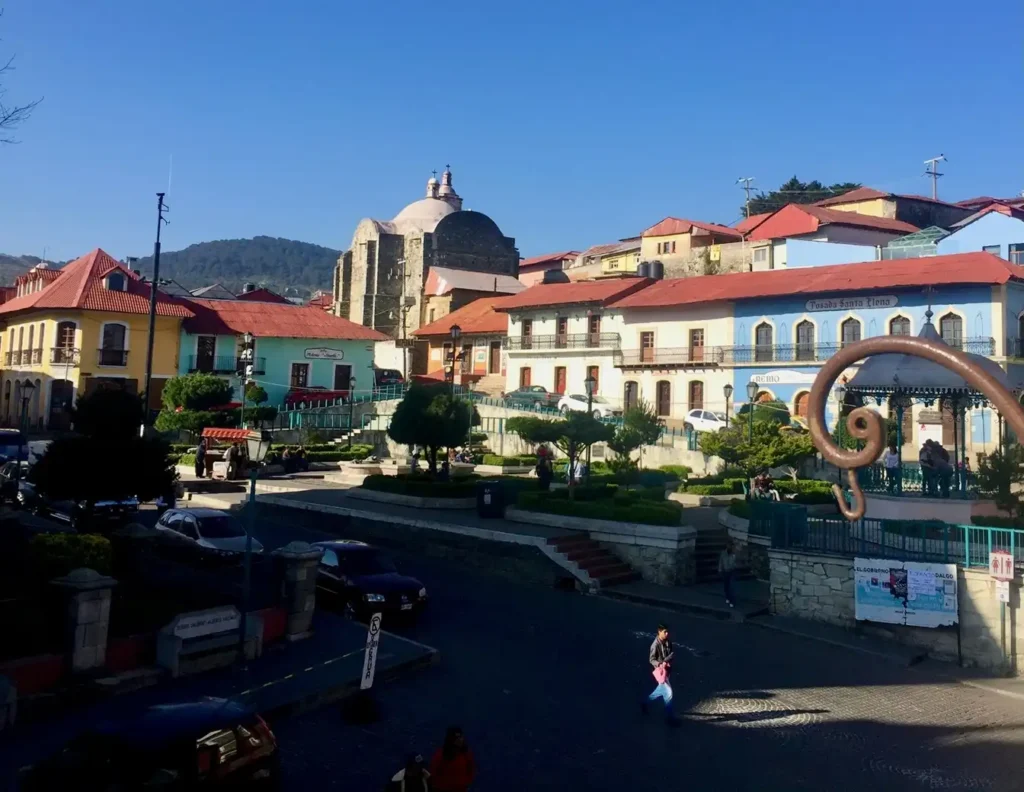
A complete Guide for 10 Amazing Things to Do in Mineral del Monte
The English Pantheon Cemetery:
White headstones marked with British names overlook the valley. Reading epitaphs for miners who crossed an ocean provides a sobering reminder of the human cost behind the region’s silver wealth.
Visit near sunset when the light softens and the site empties.
Mina de Acosta:
This restored silver mine offers guided tours into tunnels where miners worked 12 hour shifts in darkness. Tours last 45 minutes. Not recommended for anyone with claustrophobia.
The Paste Story:
Cornish miners brought their traditional pasties. Mexican cooks adopted the concept, then ran wild with adaptations.
Today, dozens of shops sell both traditional and creative versions. Traditional recipes include seasoned potato, meat, and vegetables. Modern variations offer mole negro, pineapple, tinga, and even pizza.
Where to try them:
El Portal on the main street serves traditional recipes consistently. Don Bartolo experiments with creative flavors. Expect to pay 30 to 50 pesos per paste.
5. Pachuca Clock Tower & Macromural
State capitals in Mexico often disappoint. Pachuca de Soto breaks that pattern and stands out among the main cities in Hidalgo state.
Monumental Clock Tower:
The neoclassical Reloj Monumental dominates Pachuca’s skyline. Gifted by Mexico’s mining community in 1910, the tower marks the heart of downtown.
Mining Museum:
Housed in a stunning early 20th century building, the museum traces silver extraction from pre Hispanic times through modern operations. The architecture alone justifies entry.
Macromural Palmitas:
Pachuca’s most Instagram famous site covers an entire hillside. Artists painted 209 houses in rainbow geometric patterns visible from across the city.
The project transformed a working class neighborhood. Residents now lead walking tours through the painted streets.
Climbing into the neighborhood reveals elderly residents sitting on stoops, watching tourists photograph their homes. The atmosphere feels welcoming.
Food Scene:
Mercado Benito Juárez offers authentic street food. Capital city status means more restaurants and higher quality than smaller magical towns.
6. Huasca de Ocampo
In 2001, Mexico’s tourism board launched the Pueblo Magico program. Huasca de Ocampo received the very first designation.
Walking these streets immediately clarifies why. Cobblestone lanes wind past whitewashed walls topped with red tile roofs. The 16th century parish church anchors the central plaza.
But the real magic exists in details:
Hand painted signs above family run shops. Elderly women selling homemade sweets from doorways. Church bells echoing off hills. Fresh bread drifting from corner bakeries.
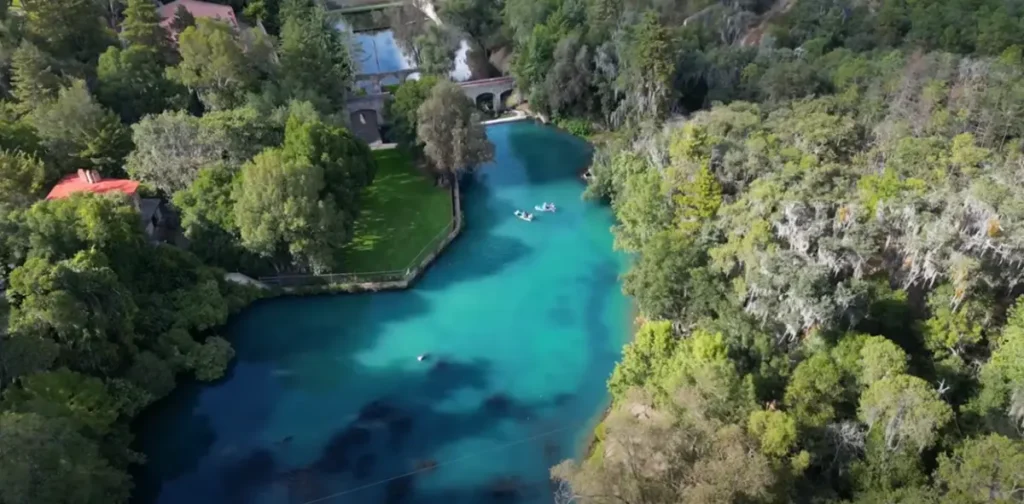
Huasca maintains authenticity that some magical towns lost to over tourism.
Practical Benefits:
Huasca serves as an excellent base for exploring:
Prismas Basálticos sits 15 minutes away. Hacienda Santa María Regla is just outside town. Multiple hiking trails are accessible from the plaza.
Several small hotels offer charming accommodations. Reserve ahead for weekends. Here is the Hidalgo tourism website for more information.
7. Parque Nacional El Chico
Established in 1898, El Chico is Mexico’s oldest national park. The reserve protects pine forests, granite formations, and mountain peaks.
The air at 3,000+ meters elevation carries the sharp scent of cold pine. Temperatures run cooler than valleys below. Pack layers even in summer.
Trails:
Peña del Cuervo Trail takes 45 minutes to reach a rock formation shaped like a crow’s beak. The viewpoint provides panoramic valley views.
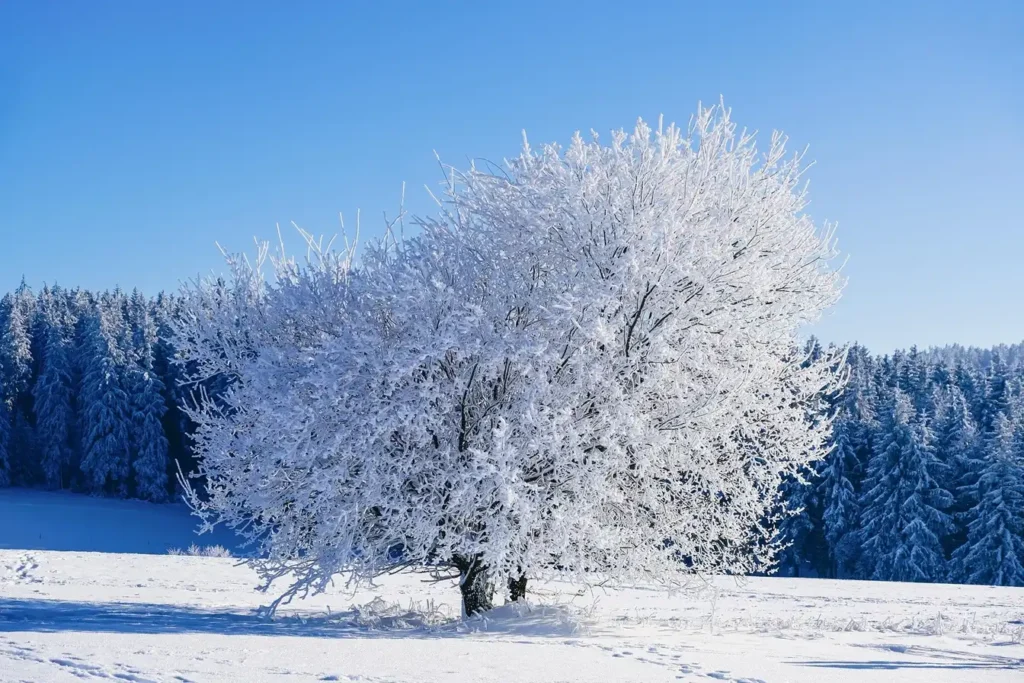
Las Ventanas features rock formations with natural windows. Multiple summit options exist for experienced hikers.
Rock Climbing:
The park’s granite formations attract climbers. Multiple established routes exist for various skill levels.
| Trail | Difficulty | Duration |
|---|---|---|
| Peña del Cuervo | Moderate | 45 minutes |
| Las Ventanas | Easy | 30 minutes |
| Summit Routes | Challenging | 3 to 5 hours |
Best Practices:
Arrive early morning. Afternoon clouds frequently roll in. Bring real hiking shoes. Mountain weather changes rapidly, so pack rain gear and warm layers.
The park entrance sits adjacent to Mineral del Chico.
8. Hacienda Santa Maria Regla
This beautifully restored 18th century estate demonstrates the wealth silver mining generated.
Built in the 1700s, the hacienda processed ore from nearby mines. Its most striking feature, a 40 arch aqueduct marching across the valley, stands as an engineering achievement that still functions.
Today the hacienda operates as a hotel, but day visitors can tour the grounds and dine in the restaurant without staying overnight.
The restaurant occupies what was once the silver baron’s dining room. Upscale Mexican cuisine in colonial atmosphere. Expect 300 to 500 pesos per person. Check official website here.
Location Advantage:
The hacienda sits between Huasca de Ocampo and Prismas Basálticos. Ideal lunch stop when visiting both in one day.
The stone aqueduct against blue sky provides the classic shot. Visit midday for the best light.
9. El Geiser Water Park
El Geiser functions as the family friendly alternative to Tolantongo.
Multiple pools fed by natural geothermal sources offer varying temperatures. The complex includes water slides, play areas, changing rooms, restaurants, and lifeguards.
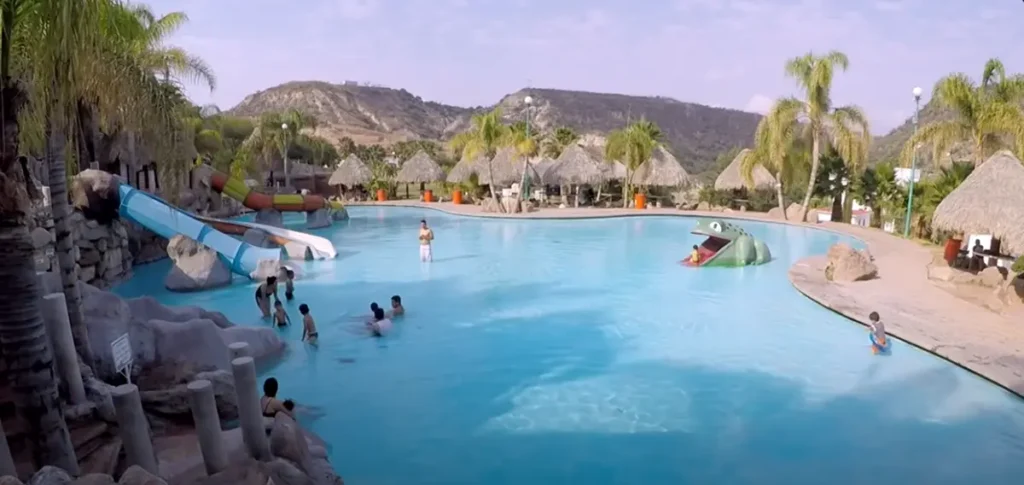
Located in Ixmiquilpan about 90 minutes from Pachuca, the park serves families wanting thermal spring benefits without challenging access.
Key Differences from Tolantongo:
Modern amenities versus natural setting. Easy access versus mountain road. Developed facilities versus raw canyon beauty. Family oriented versus adventure focused.
Adults seeking dramatic natural settings may find it underwhelming. Families with young children often prefer its convenience and safety features.
10. Mineral del Chico
Smaller and less visited than Real del Monte, Mineral del Chico offers similar colonial architecture without the crowds.
The entire town seems suspended in time. Wooden balconies overhang narrow streets. Smoke curls from chimneys. On weekday mornings, you’ll share streets with more goats than tourists.
El Contadero:
Unusual rock formations outside town create a natural labyrinth. The boulders and passages provide excellent scrambling and photography opportunities.
National Park Access:
The park entrance sits at the edge of town. Walk from the plaza into wilderness within 10 minutes.
Mineral del Chico represents a quieter side of Hidalgo tourism. If Real del Monte feels too busy, come here for genuine small town mountain atmosphere.
A detailed guide for El Chico National Park Lovers.
Hidalgo Mexico Travel Itineraries
2 Day Weekend Trip
Day 1: Drive to Pachuca. Visit Clock Tower and Mining Museum. Lunch at Mercado Benito Juárez. Afternoon in Real del Monte exploring English Cemetery. Sample pastes from multiple shops. Overnight in Real del Monte.
Day 2: Morning at Mineral del Chico and El Contadero. Hike to Peña del Cuervo. Afternoon at Prismas Basálticos. Quick stop in Huasca de Ocampo. Return to Mexico City.
3 Day Complete Experience
Add Tolantongo overnight and Tula to the 2 day itinerary.
Day 1: Tula archaeological site in the morning. Drive to Tolantongo. Afternoon and evening at hot springs. Overnight at Tolantongo.
Day 2: Early morning at pools before day trippers arrive. Drive to Pachuca. Afternoon exploring Pachuca attractions. Overnight in Real del Monte.
Day 3: Follow the Day 2 itinerary from the weekend trip above.
Travel Essentials
Getting There
By Bus: Buses depart Mexico City’s Terminal del Norte to Pachuca every 30 minutes. Journey takes 2 hours. Cost is 150 to 200 pesos.
By Car: Take Highway 85D toll road from Mexico City to Pachuca. Drive time is 90 minutes in normal traffic. Toll costs about 150 pesos.
By Organized Tour: Multiple companies offer tours from Mexico City. Hotel pickup included. Prices range from 800 to 1,500 pesos. Strongly recommended for Tolantongo.
Where to Stay
| Area | Type | Price Range (pesos/night) |
|---|---|---|
| Pachuca | Business hotels | 500 to 1,500 |
| Real del Monte | Boutique guesthouses | 800 to 1,500 |
| Huasca de Ocampo | Small hotels | 600 to 1,200 |
| Tolantongo | Basic cabins | 400 to 600 |
Reserve ahead for weekends. Hidalgo’s tourism is growing and best properties fill quickly.
Best Time to Visit
Ideal months: November through April
Dry season brings mild daytime temperatures (15 to 25°C), cool nights, minimal rain, and clear skies perfect for photography.
Avoid these times: Easter week when Mexican tourists pack popular sites. December 25 to January 6 holiday period sees maximum crowds. Weekends are always busier than weekdays.
Weekday versus weekend matters more than season. Tolantongo on a Wednesday feels nearly empty. The same spot on Saturday becomes packed.
Local Food to Try
Pastes: These Cornish pasties adapted with Mexican flavors are a must. Try at least three different varieties.
Barbacoa: Weekend mornings mean slow cooked lamb served with fresh tortillas. Hidalgo’s version ranks among Mexico’s best.
Pulque: Slightly sour fermented beverage made from maguey sap. Often flavored with fruits. Best consumed fresh.
Safety Information
Yes, Hidalgo is safe with normal precautions.
The main visitor areas experience very few security issues. Pachuca and popular tourist destinations maintain visible security presence.
Standard precautions: Don’t flash expensive items. Avoid isolated areas after dark. Use reputable tour operators. Keep valuables secured. Stay aware of surroundings.
Violent crime affecting tourists remains rare in Hidalgo’s main visitor areas. Solo travelers, including women, regularly visit without issues.
For the latest health and safety guidelines while traveling in Hidalgo, visit the official website: hidalgo.travel
Frequently Asked Questions
What is Hidalgo Mexico best known for?
Three things define Hidalgo. The Grutas de Tolantongo hot springs with turquoise pools cascading down canyon cliffs. Mexican Independence history, as the state shares its name with Miguel Hidalgo y Costilla who initiated Mexico’s War of Independence. Silver mining heritage creating unique towns like Real del Monte.
How far is Hidalgo from Mexico City?
Pachuca sits 90 kilometers from Mexico City, about 90 minutes by car or 2 hours by bus. Popular tourist attractions range from 90 to 180 kilometers, translating to 1.5 to 3 hour drives. Everything remains accessible for day trips.
Are the Tolantongo hot springs worth visiting?
Yes, despite the travel time and challenging final road. The combination of turquoise thermal pools, dramatic canyon scenery, and unique cave tunnel creates something genuinely special. Many travelers call it their trip highlight.
Can you visit Hidalgo without speaking Spanish?
Technically yes, but some Spanish helps significantly. English remains uncommon outside main tourist zones. Learn basic phrases before visiting. Translation apps help bridge gaps. A small effort yields big benefits.
How many days do you need to visit in Hidalgo Mexico?
Minimum 1 to 2 days to see highlights only. Better with 3 to 4 days to add more attractions and reduce rushing. Ideal 5+ days to explore lesser known spots. Most visitors dedicate 2 to 3 days as a weekend trip from Mexico City.
Plan Your Visit
Hidalgo rewards travelers who look beyond Mexico’s heavily touristed destinations.
No mega resorts here. No cruise ship crowds. Just natural wonders formed over millennia, colonial towns where traditions continue unchanged, and people genuinely pleased you found their corner of Mexico.
The compact size allows remarkable variety in minimal travel time. The proximity to Mexico City makes everything accessible without flights.
Tourism is growing. The secret is spreading. But Hidalgo still feels genuinely undiscovered compared to Oaxaca or San Miguel de Allende.
Visit now while weekday mornings at Tolantongo still feel like private paradise. While you can explore archaeological sites without crowds. While small town Mexico still exists in these mountain valleys.
Pack your swimsuit for hot springs. Comfortable shoes for cobblestone streets. Warm layers for mountain towns. And curiosity for discovering what guidebooks don’t mention.
Come to Hidalgo. Experience the Mexico that still exists when you know where to look.
